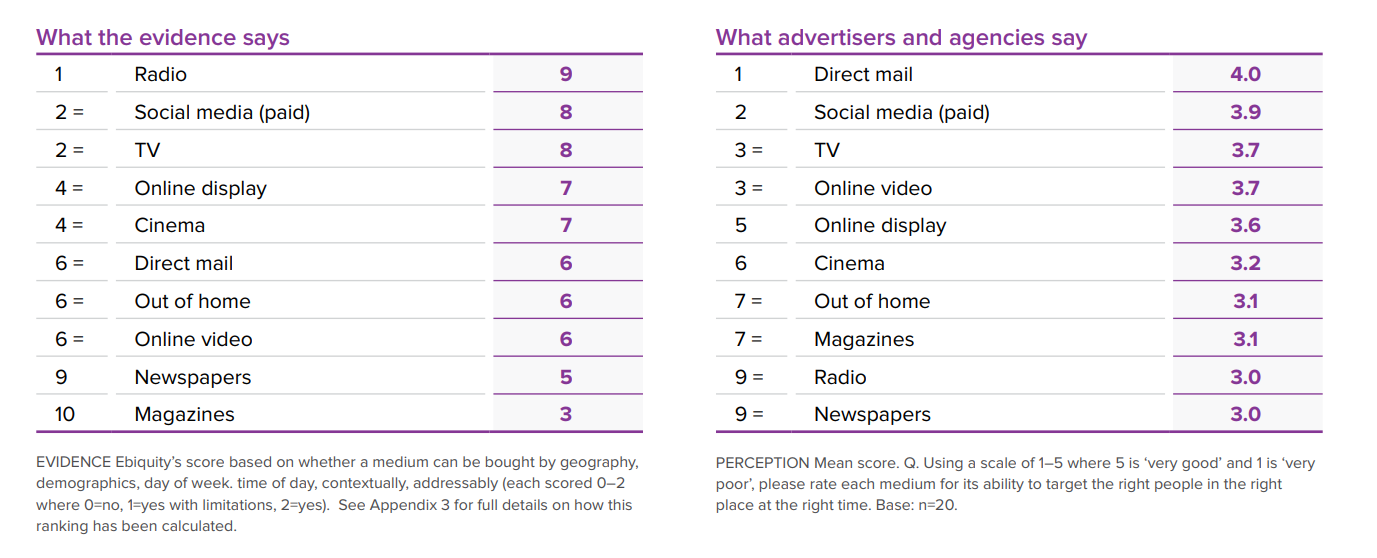The Radio Roadmap Targeting
September 1, 2022

 4
4
min
Getting true advertising effectiveness starts with knowing who your customers are and how you can best approach them. Using national and regional advertising methods can result in a lot of wastage.
Reaching the most receptive of any audience isn't an easy prospect, it's been that way for a long time.
Back in the 50's people were targeted based on their job role. In the 80s it was about where they lived. In the 90s, we targeted based on what they bought. These insights were gained through hard fought censuses or surveys. Either way, they were static and didn't reflect the lives we lead.
Until now, we.ve been thinking about what the demographic characteristics of a person can tell us about who that person is and what they might purchase; for instance, if they live in a certain area, are of a certain age and do a certain job, we might be able to deduce that they like holidays. However, this is simply a "propensity", meaning they are tice as likely to engage with holiday ads, based on results modeled from a survey, measuring in the tens of thousands.
Now, with new data sets such as social data, we already know that certain people like foreign holidays before we’ve even tried to figure out where they live or what else they do. By adding that information, we can then complete the picture on who a customer is, how best to communicate with them and what channel to use to do so.
In short, instead of targeting using demographics, we need to target using what actually matters: people’s passions, motivations and mindsets. We need to target like radio has been since its inception - based off interest, passion and love.
"Our analysis shows that radio is the most flexible medium as it can be used to target audiences by geography, demographics, context, time of day, day of week and, to a more limited extent, addressably for listeners on connected devices"
-Re-Evaluating Media, Ebiquity
Different stations carry different interests and, as a result, different audiences. Going one step further, the shows on those stations specialise even more - with certain presenters and personalities garnering niche interests and passions.
The Hear and Now Report
Nine in ten instances of listening to live radio are done while engaged in another activity.
Listeners are able to absorb the detail of radio ads when they are participating in tasks or activities as effectively as when engaged in other audio listening or TV viewing.
Advertising that directly relates to tasks or activities that listeners are participating in builds on these editorial effects and turbocharges them:
- Engagement with advertising rises by 25% as a result of the ads being more personally relevant
- in parallel, long-term memory encoding of details in the advertising increases by 22% (rising to 28% at final branding moments)
- Compared to a range of other TV and radio campaigns, the test ads rose from 53rd to 94th percentile when heard in a relevant context (i.e. performing better then 94% of all other ads measured).
Using Context in Your Radio Creative
As an advertiser you're under constant pressure to prove your advertising effectiveness. You need something efficient and cost-effective. Something you can guarantee will connect with your customers consistently at the times they're most likely to take action. That's where radio comes in.
Radio delivers on context in a few important ways:
Strategic Planning
You’re probably reading this with a pretty good idea of when you would want your advertisements to run. Nine times out of ten, however, advertisers jump at the wrong times.
Drive time and breakfast are massively popular on radio stations and are always overbooked, but that doesn’t automatically mean it’s the best for your business. You need to think about your brand, your customers and what they’re doing at certain times in the day.
If that sounds like a lot, don’t worry, every radio station will have Planners who are specifically briefed to find you the time bands that will get you the best response.n
Smooth Radio North West’s Planner shared some of the most common mistakes made by advertisers on radio in terms of planning spots and airtime:
| 1 - Advertisers Presume No One is Listening Overnight – Smooth North West, in isolation, delivers listeners you wouldn’t expect. Taxi Drivers, Lorry Drivers, you name it. Even those who are looking to get back to sleep. A lot of advertisers are often surprised at the levels of audience radio delivers overnight and a bit of bravery is required to take advantage of this listener base. Smooth is known as the ‘relaxing music mix’ so this Mattress supplier knew their radio advert focusing on those who’re struggling to sleep at night would hit the ground running. They picked unpopular (and massively cheap slots) that run overnight to target those who are struggling to sleep. We knew Smooth delivered massive audience overnight so this campaign went down a storm. 2- Advertisers Jump At Busiest Slots – Not only do the prices mount up higher and higher due to competition, it’s become a bit of misnomer that these slots give the best results, they just give you the most of our audience when they’re captive. Unless you’re a motor salesman, windscreen repair person or anything relating to cars – we’d suggest you stay away from drive time and instead look for where your customers are most engaged. 3 - Programmatic Ads on Radio are a thing – Line up more than one bit of creative because radio has the technology to change which ad gets played on the fly. McDonalds UK ran programmatic ads during the summer of 2017. Depending on temperatures form the met office, their creative would change. While it stayed under a certain temperature they ran the regular ads for the ‘Saver Menu’. Once the temperature went over a certain level, those switched out for McFlurry Ads. Simple. |
Strategic planning, like most advertising, starts from having a decent brief and a clear understanding of your customers. Work on clearly defining those audiences so we can find the perfect spot for your ad to play on.
Sponsorships
Down to the emotional connection and relationship between listener and station, competitions, phone ins, text ins and other listener engagement activities have massive impact on radio. The impact far out-shoots other traditional media and, with the combination of digital and radio, this is only improving over time.
A sponsorship works in a similar way to regular air-time promotions, but instead of playing between other ads in a slot you get to be the champion for a specific segment on radio. This could be a competition, a giveaway or a specific show like the weather, news or a particular host’s show.
Sponsorships like these that are massively popular with a very distinct listenership give you a chance to get contextual advertising perfect.
Each segment that you can sponsor has it’s own specific tone and content which you can follow according to your objectives.
Advertisers looking to drive sales to their music event have sponsored some of our most popular hits shows. Legal and law firms have sponsored the news and so on.
For a slightly more subversive example, following the weather with a sponsorship for a travel agent would be a sound decision. Imagine if you had a great deal for sunny breaks away and knew that you needed to target work weary adults who were thinking about a break. Hitting them after they’ve just heard the bleak weather report and are thinking about how rubbish the weather is is a great use of context based advertising.


